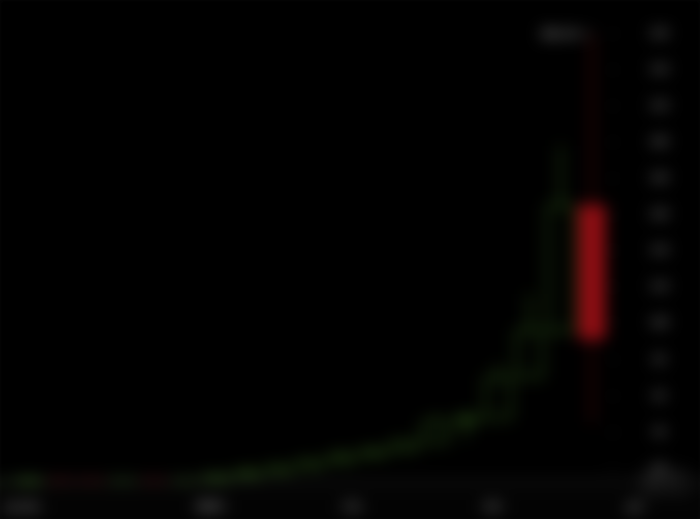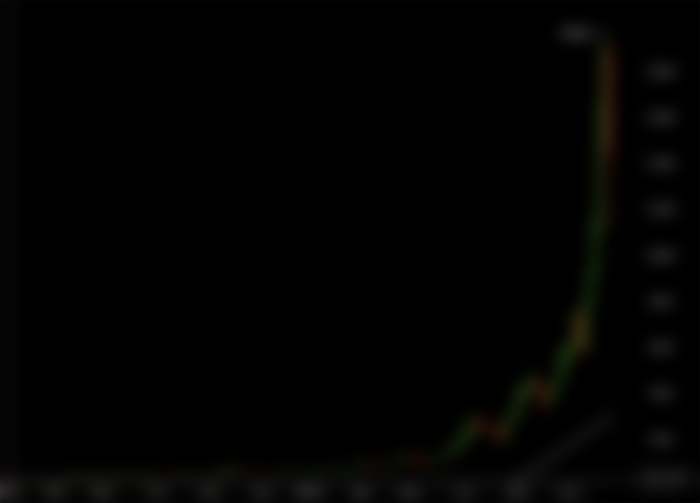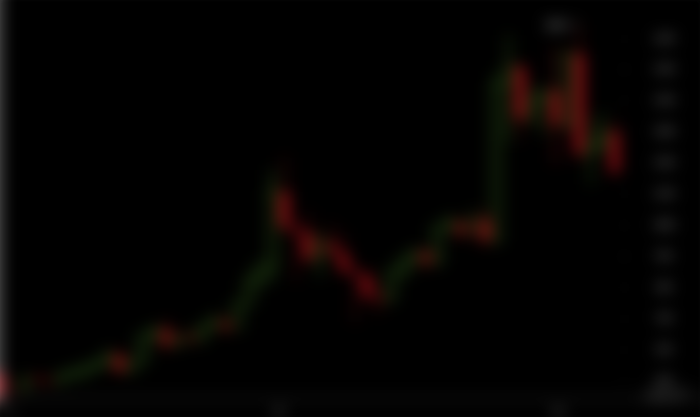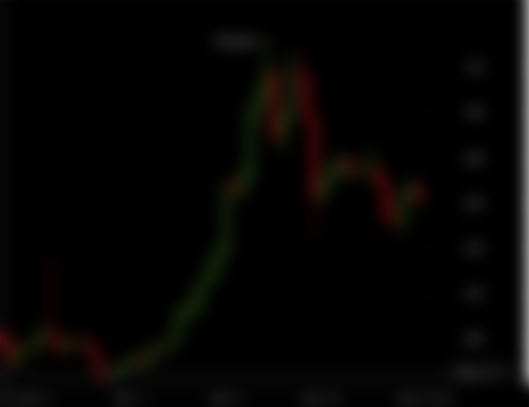The Bitcoin (Cash) Halvings And Bitcoin's Designed Scarcity

Eventually, another cryptocurrency will surpass BTC, and the correlation of BTC with the rest of crypto assets will cease to exist.
It is bound to happen. Ethereum is an example of having every attribute required to achieve it.
BTC presents an interesting trading case with "boom" and "bust" cycles usually beginning after each halving.
Speculation is at the core of the crypto markets, and BTC is presented as a highly speculative asset, having abandoned the Bitcoin whitepaper and its currency features.
The designed scarcity, the halving (or halvening) events, and the lost Bitcoins (BTC and BCH) affect the price of these assets.
Bitcoin Cash has 21 million fixed supply as BTC, and multiple millions of BCH have been lost throughout Bitcoin's history.

3 to 6 Million BCH Are Considered Lost
From the Genesis block until August 2017, BCH shares the same history with BTC.
The lost Bitcoins until August 2017 are BTC and BCH. These are Bitcoins sharing the same address for both networks.
Meaning there are fewer BCH today in existence as well.
Bitcoins aren't lost, but they still exist on the blockchain. What is lost is the access to move these Bitcoins. The correct term is irretrievable.
Bitcoin (both BTC and BCH) have a total fixed supply of 21 million. Although, researchers estimate approximately 3-6 million coins are already lost or irretrievable (source1, source2, source3).
According to Fortune magazine, until about the 2017 fork and the upgrade that followed with Bitcoin Cash, 3,8 million Bitcoins (BTC and BCH) are considered lost.

(source)
This number also includes the Satoshi wallets.
Satoshi mined more than one million Bitcoins between 2009-2010, but we consider the keys providing access to these Bitcoins are lost.
Most Bitcoins were "lost" during the early mining days (2009-2010) when Bitcoin was still an experiment, and users could easily download the blockchain and start mining with just their CPU.
In the first two years of its existence, Bitcoin wasn't popular. It took a while before the first publication on Slashdot announced Bitcoin to a wider audience. It was just a handful of cryptographers, developers, and Bitcoin enthusiasts in the beginning.
Mining Bitcoin was a recreational activity for the early "adopters" of this technology. Trading only started in 2010 with a simple exchange offering BTC to Paypal trades that gave Bitcoin a starting price (less than $0.01).
Lost Bitcoins are both lost for BTC and BCH for their overwhelming majority.

The Three Bitcoin Halvings (2012-2016-2020)
Bitcoin Cash is Bitcoin since it shares (with BTC) the Bitcoin blockchain and history until 2017.
To put it simply, BCH is the upgraded version of Bitcoin that scaled (raised the blocksize limit) and the one that contains currency features.
The BTC version of Bitcoin is the one that stagnated developments, crippled Bitcoin, but still managed to hijack the brand name.
Designed Scarcity & The First Halving
The designed scarcity model of Bitcoin was not considered too often by the early adopters between 2009-2011.
It was understood that Bitcoin would contain a fixed supply of 21 million Bitcoins and it will be mined in certain stages, but the effect the halving would produce was ignored by most of the early adopters.
On November 28, 2012, block 210,000 was the last one rewarding miners with 50 Bitcoins. After the first halving, the coinbase transaction rewards were 25 Bitcoins instead of 50.
Solo mining by 2012 was difficult already as ASIC mining (specific hardware to solve the Bitcoin mining algorithm - SHA256) was already reaching an industrial scale.
The mining rewards were halved, and price pressure by the miners selling their Bitcoin was also reduced by 50%.
What happened was unexpected to those unaware of supply/demand models (reduced supply with fixed demand). The speculative side and promotional activities of Bitcoiners on YouTube and forums, created for Bitcoin the image of a modern breakthrough payments network, and "coincided" with the first Bitcoin halving.
Bitcoin's price exploded upwards exponentially following the reduced (new) supply and increased demand.

The price of Bitcoin (chart: Bitstamp) was hanging at $12 at the time of the first halving (November 28th, 2012), while six months later, the price peaked at $260 (April 2013), more than 20 times higher from where it started.
But it wasn't over yet. Bitcoin interest was re-ignited, and demand skyrocketed, helping Bitcoin reach the mainstream news for the first time by the end of 2013.
Bitcoin was now heralded as a new internet phenomenon with disruptive financial potential. A digital form of cash, with all fonts to achieve mass adoption, and challenge the conventional payment networks (Visa, Mastercard, Paypal, Swift, etc).
Bitcoin was new money, decentralized, secure, and with small adjustments to the code, it could have achieved mass adoption. It never proceeded with such developments, though, as a small team of developers took control and centralized Bitcoins development.
All the weirdest events that occurred right after Adam Back's introduction in the Bitcoin forum seem today carefully planned to erase the currency features from Bitcoin and stagnate its development.
Bitcoin officially stopped being any meaningful digital currency option, in 2017 when fees reached $50 for the first time and transactions were clogged, waiting for validation for weeks.
However, there was another halving even before the 2017 fork.
Bitcoin is designed to halve the miners' rewards every 210,000 blocks. The halving occurs roughly every four years (actually less than that).
With block 420,000, the second halving occurred as mining rewards in July 2016, once again were reduced by 50%. New coinbase transactions from block 420,001 were creating 12,5 Bitcoins now. A factor that once again reduced the selling pressure of new Bitcoins in the market.
The demand/supply models explain the possible outcome, even if demand was simply unchanged. Some expected the price would rise rapidly and speculated accordingly, buying Bitcoin throughout 2014-2015 at a price range between $200-$400.
Bitcoin was not mainstream all this time. In 2014 the crypto industry suffered a heavy blow with the collapse of the MtGox exchange.
The infrastructure was weak as the rest of the exchanges also had to deal with multiple security issues, while banks were also not favoring cryptocurrency, and often rejecting transactions, seizing funds (fiat) in bank accounts, and questioning Bitcoin traders and investors.
Coinbase, Kraken, Bitstamp, Bitfinex are some of the exchanges that rose into prominence after MtGox filed for bankruptcy in 2014.
Between 2014 and 2016 Bitcoin was struggling. It only managed to reach its previous ATH of $1200 at the end of 2016, and this was news that brought it back to the mainstream once again.

The second halving occurred in July 2016, at a price of around $250. The price kept rising for a year and a half and reached an ATH of $20,000 by the end of 2017.
The halving reduced the pressure of selling and increased speculative demand for Bitcoin. This cycle followed adoption throughout 2014-2016, as Bitcoin was adopted by Microsoft as a payments method, while in mid-2017, Japan announced it was going to accept multiple cryptocurrencies as legal tender in the country.
This news fueled speculation and also gave ground to more cryptocurrencies to rally and reach exorbitant prices (XRP, LTC, and more).
China banned Bitcoin once again in September 2017, leading to mass liquidations, but at a point when Bitcoin had just reached global news headlines. It was expected the rally to continue and it did in extraordinary terms.
The third halving happened in April 2020 for BCH and May 2020 for BTC.
It renewed interest in speculation and perhaps was the decisive factor for Michael Saylor and Microstrategy to buy an astonishing amount of BTC. BTC peaked one year later in May 2020 close to 60k and crashed by 55% a few weeks later.
It recovered and reached a new ATH 18 months after the third halving and is now again 45-50% lower from its ATH.
The price of BTC after the peak is reached can go down by 80% before it finds the bottom.
The bottom all this time was always higher than the historic ATH of the previous "cycle".
While the same cycle has occurred three times in history, we certainly don't know if it will be repeated.
Speculation aside, BTC has no utility.
BTC lost its currency features while striving to revive them with layer-2 networks (Lightning and Liquid) that constitute more complex systems to the banking networks, and leaning towards centralization, with (regulated) financial hubs controlling already 99% of transactions.
These are facts often expressed by BTC maximalists as well. The "store of value" argument is not sustainable and not realistic since speculation and greed drive BTC price after 2015 (in the last two cycles).
There is no vision of disrupting the legacy financial system anymore, but BTC is slowly integrated into this system, while its community is embracing Statism by jovially promoting the enforcement of custodial, centralized, and KYC regulated Strike/Chivo wallets by the El Salvador State.

The Bitcoin Cash Halvings And Their Importance
Bitcoin Cash is the version of Bitcoin that upgraded the network and proceeds with the original vision of challenging the dominance of fiat currencies by providing an alternative network of payments.
Bitcoin Cash is a decentralized and secure network that scales to meet the demand for global adoption as P2P Electronic Cash.
Its code contains all the scarcity features of Bitcoin:
21 million fixed total supply
Halving every 210,000 blocks
The same amount of lost Bitcoins with BTC (more or less)
Supply/demand charts are no different from those of BTC. Distinctions are purely on the side of marketing, PR, branding, and advertising.
Bitcoin's (BTC) aggressive marketing and advertisement by various popular figures in social media and interviews (Snowden, Musk, Dorsey, etc.) created favorable terms for BTC.
Bitcoin Cash shares the same blockchain history as BTC, so two halvings had already occurred before 2017 for Bitcoin Cash as well (2012-2016).
The third Bitcoin Cash halving happened in April 2020 at block 630,000, reducing the new BCH per block to 6.25.

The Coinbase chart gives us the greater picture of Bitcoin Cash price action after the 3rd Bitcoin halving (for BCH).
In one year after the halving, the price of BCH grew on average. Demand for BCH organically increased, as the increase of investors followed the growth of the network userbase.
Throughout 2021 Bitcoin Cash was accepted as a currency by thousands of new merchants, and reached historic high interest by institutional investors.
Although, Bitcoin Cash didn't reach the mainstream as it did back in 2017. There is vast anti-BCH propaganda that can be countered with adoption and developments.
Bitcoin Cash news was deliberately concealed by top networks (crypto and mainstream), although, in 2021 it was proven twice that price can grow and even reach the previous ATH:
1. Elon Musk Endorsement

Simply two words of acknowledgment by Elon Musk on a Kim Dotcom tweet was enough to boost the price of Bitcoin Cash, all the way up to $1,700 in May 2021.
Some of the most wealthy individuals are often using their social media power.
Trading bots are waiting for new Tweets, analyze their importance (positive or negative), and instantly purchase massive amounts of the asset mentioned.
There was no follow-up by Musk, on this Tweet, as he was heavily interested in his Dogecoin application as a payment method for Tesla's merchandise.
2. Kroger's (fake) news of BCH adoption

This was fake news, but the effect was certainly astonishing even for the first few minutes before the rebuttal.
Even fake news generates bullish terms for Bitcoin Cash. It was initially received as positive news by investors as they discovered Bitcoin Cash was a working version of Bitcoin.
Bitcoin Cash is a cryptocurrency that demonstrates all the conditions to succeed as a payments method and in the case, such news of one retailer become real news, it would jumpstart a bull run for Bitcoin Cash price, bear market or not.
There are trillions of dollars still to be invested in the cryptocurrency industry. Waiting to find opportunities that adoption and use case creates.
Eventually a big retailer like Krogers or even bigger one will adopt Bitcoin Cash.

In Conclusion
BTC achieved mainstream adoption as an investment asset, and not a currency.
Bitcoin Cash is not an alternative to Bitcoin but is Bitcoin. It has succeeded in upgrading the network, and never had the ridiculous fees or congestion issues BTC is facing all this time.
Bitcoin Cash achieved what Satoshi wanted for Bitcoin, and if this was one person and still lives among us, I am sure he/she will be proud of Bitcoin Cash.
It isn't perfect, yet, but the whole community is working towards achieving that.
The community of Bitcoin Cash embraces innovation and not stagnation. It confronts new challenges and explores new opportunities without diverting from the P2P Electronic Cash features.
The Bitcoin (BCH) halving has an obvious positive effect on its price. The next halving is expected two years from now in 2024.

BCH has suffered two contentious forks, though (BSV and eCash), creating negative price effects for a considerable time.
Considering the price of BCH almost two years after the 3rd halving, it was reduced a lot in the last few months.
Bitcoin Cash didn't sustain a price of $600 that would be ideal and more logical at this point but was suppressed at a point of reaching close to the pre-halving price.
There are multiple factors to consider, though as except demand, we witness the exploitation of BCH in derivatives exchanges with naked shorting by unidentified traders. Binance contains 50% of derivatives trading and at a rather odd time of BCH high demand, it paused withdrawals simply because it had none available.
Naked shorting of BCH was exposed as it was the only reasonable explanation. These practices can suppress price beyond the fair value of an asset and create negative terms for the short term.
Bitcoin Cash offers a strong use case, positive developments, and has an approach that serves the whole cryptocurrency field.
It should be considered a gem by crypto exchanges, and CZ should rethink the approach of Binance on BCH trades.

Cover Photo: by Milad Fakurian on Unsplash (modified)
Copyright Disclaimer:
All material published in this content, is used for entertainment and educational purposes and falls within the guidelines of fair use. No copyright infringement intended. If you are, or represent, the copyright owner of images used in this article, and have an issue with the use of said material, please notify me.
Follow me on:
● ReadCash ● NoiseCash ● Medium ● Hive ● Steemit ●Vocal ● Minds ● Twitter ● LinkedIn ●Reddit ● email

Don't forget to Subscribe and Like if you enjoyed this article!













Its was a fruitful information, i coudnt sink it all the information, ill read it again soon